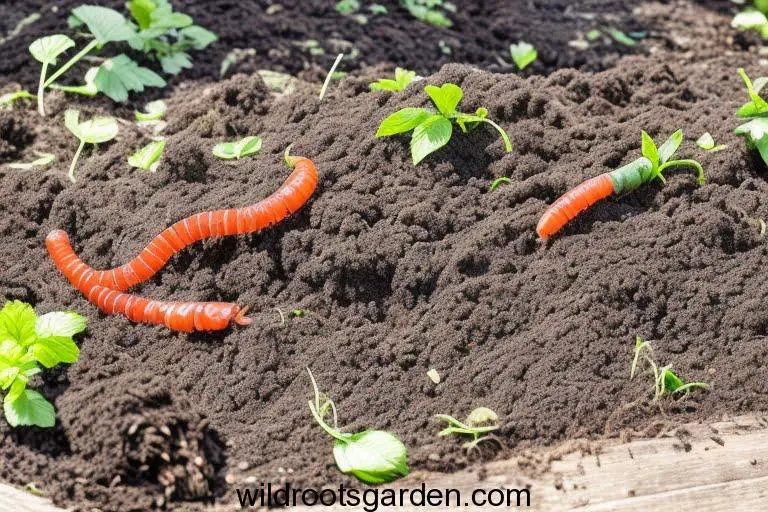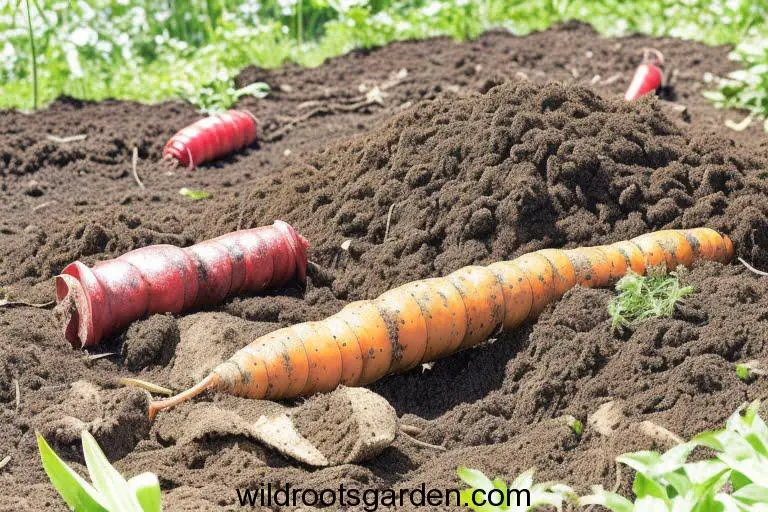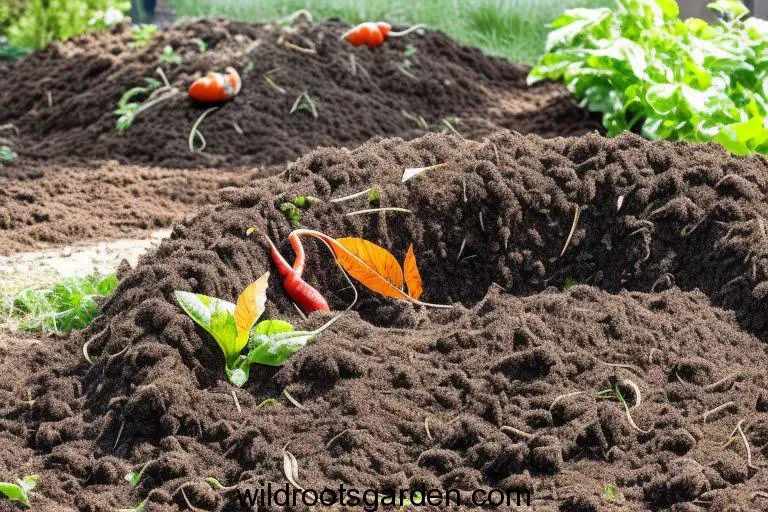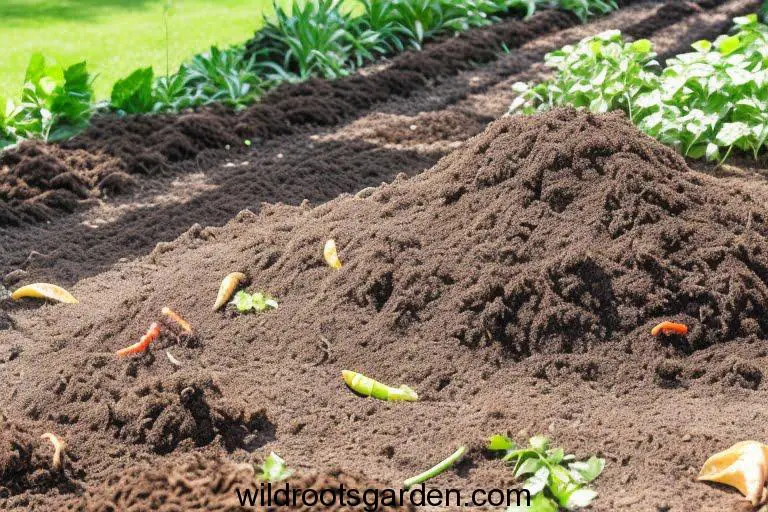Gardening enthusiasts claim that a garden’s health and productivity can always be enhanced. One intriguing and environmentally friendly approach is to introduce compost worms to the landscape. These resourceful creatures can significantly boost soil nutrition and promote overall plant growth. If you’re curious if you can add compost worms to your garden and how to do it, this article will provide you with all the information you need.

JUMP TO TOPIC
- 1 Understanding Compost Worms
- 2 Benefits of Compost Worms in the Garden
- 3 Choosing the Right Compost Worms
- 4 Factors to Consider When Choosing Compost Worms
- 5 Preparing the Garden for Compost Worms
- 6 Soil Preparation
- 7 Creating a Suitable Environment
- 8 Introducing Compost Worms to the Garden
- 9 Proper Placement of Compost Worms
- 10 Providing Appropriate Bedding Materials
- 11 Caring for Compost Worms in the Garden
- 12 Feeding Compost Worms
- 13 Maintaining Moisture Levels
- 14 Managing Temperature
- 15 Using Worm Castings in the Garden
- 16 Benefits of Worm Castings
- 17 Applying Worm Castings in the Garden
- 18 Troubleshooting Common Issues
- 19 Dealing with Overpopulation
- 20 Preventing Pests and Diseases
- 21 Frequently Asked Questions (FAQs)
- 22 Conclusion
Understanding Compost Worms
Red wigglers, sometimes referred to as compost worms or Eisenia fetida, are a particular kind of earthworm used in composting. These are distinct from the common earthworms you discover in your garden. Worms that live in compost have an insatiable thirst for organic waste and flourish in rotting material.
Benefits of Compost Worms in the Garden
Introducing compost worms to your garden can offer numerous benefits. These include:
Improved soil fertility: Compost worms break down organic matter and transform it into nutrient-rich castings. These castings are a valuable source of humus, which enriches the soil and enhances its fertility.
Enhanced nutrient availability: The castings produced by compost worms contain essential nutrients in a form that plants can readily absorb. This improves the availability of vital elements necessary for healthy plant growth.
Better soil structure: Compost worms help improve soil structure by aerating the soil and creating channels for water, air, and roots to penetrate. This promotes better root development and overall plant health.
Increased moisture retention: The burrowing activity of compost worms helps the soil retain moisture. This can be especially beneficial during dry spells when water conservation is essential.

Choosing the Right Compost Worms
The proper kind of worms must be chosen before adding compost worms to your garden. Eisenia fetida is the kind most frequently employed for composting, however, Eisenia hortensis and Lumbricus rubellus are other appropriate species.
Factors to Consider When Choosing Compost Worms
When selecting compost worms, consider the following factors:
Climate suitability: Ensure the worms you choose are suitable for the climate in your area. Some species thrive in cooler temperatures, while others prefer warmer conditions.
Feeding habits: Different worm species have varying feeding habits and preferences. Consider the types of organic waste available in your garden and select worms that can efficiently consume it.
Population growth: Some compost worm species reproduce more rapidly than others. If you’re looking to establish a large worm population quickly, opt for species known for their prolific breeding.
Preparing the Garden for Compost Worms
It’s crucial to prepare the soil and establish an atmosphere that will support the growth of compost worms before adding them to your garden.
Soil Preparation
The first step in creating a garden is to prepare the soil in the allocated space. Loosen the soil and get rid of any pebbles or debris that might get in the way of the worms’ movement. Make sure the soil is well-drained because too much moisture can harm the worms’ health.

Creating a Suitable Environment
To thrive, compost worms need a damp, dark, and well-ventilated environment. To provide them with the best habitat possible, think about the following steps:
Shade: Choose a location in your garden that provides partial shade to protect the worms from extreme heat or cold.
Bedding materials: Prepare a bedding layer using organic materials such as shredded newspaper, coconut coir, or aged compost. This layer will serve as a comfortable home for the worms and help maintain moisture levels.
Introducing Compost Worms to the Garden
It’s time to introduce the compost worms to their new habitat once your garden has been prepped.
Proper Placement of Compost Worms
On the prepared bedding layer, scatter the worms evenly. Do not put them in regions that are subject to flooding or direct sunshine. Permit the worms to bury themselves in the bedding material at their rate.
Providing Appropriate Bedding Materials
Make sure the bedding materials are still damp but not soggy. To keep the bedding at the proper moisture level, mist it with water frequently. To keep the worm bedding moist and dark, cover it with a layer of wet newspaper or burlap.
Caring for Compost Worms in the Garden
It’s essential to take good care of your compost worms to preserve their health and output.
Feeding Compost Worms
Compost worms are largely vegetarian and eat decomposing organic debris like eggshells, coffee grounds, tea leaves, and vegetable and fruit scraps. Citrus fruits, meat, dairy items, and greasy foods should not be given to them as these can hurt the worms and attract bugs.
Maintaining Moisture Levels
Check the bedding material’s moisture content regularly. It should have a damp, sponge-like feel to it. Mist the mattress with water if it becomes too dry. Add dry bedding materials, such as shredded newspaper, if it starts to get too wet so that the moisture may be absorbed.
Managing Temperature
Temperatures between 55°F and 77°F (12°C and 25°C) are ideal for compost worm growth. It can be dangerous to expose them to excessive heat or cold. Consider insulating the worm bin or relocating it indoors during the winter in colder climates.
Using Worm Castings in the Garden
Compost worms produce vermicompost, also known as nutrient-rich castings, when they ingest organic waste. For your plants, these worm castings are an excellent natural fertilizer.
Benefits of Worm Castings
Worm castings can be used in the garden for many reasons, including:
Improved soil structure: Worm castings enrich the soil with organic matter, enhancing its structure, porosity, and water-holding capacity.
Enhanced nutrient availability: Worm castings contain high levels of essential plant nutrients in a form that is readily available to plants. This promotes healthy growth and robust yields.
Suppression of plant diseases: Worm castings contain beneficial microbes that can help suppress harmful pathogens and diseases in the soil.
Applying Worm Castings in the Garden
Distribute worm castings evenly among all of your garden beds to get the most advantages. To achieve proper assimilation, gently massage the castings into the first few inches of soil. Worm castings can also be steeped in water to create a liquid fertilizer known as worm-casting tea.
Troubleshooting Common Issues
Composting using worms is usually simple, although occasionally problems might occur. Here are some typical issues and solutions for them:
Dealing with Overpopulation
You might need to think about dividing your worm population into multiple bins or sharing them with other gardeners if it exceeds the capacity of the available resources. This will stop overpopulation and guarantee that each worm has enough food and room.

Preventing Pests and Diseases
Make sure your worm bin is properly maintained and clean to prevent pests or infections. Meat, dairy, and greasy foods shouldn’t be added because they can produce unpleasant odors and draw flies. Keep a regular eye on the trash can for any symptoms of bugs or illnesses, and take action as necessary.
Frequently Asked Questions (FAQs)
Can I put any type of worm in my garden?
How long does it take for compost worms to multiply?
Can compost worms survive in extreme temperatures?
Can I use regular soil instead of bedding materials for composting worms?
How often should I harvest worm castings from my garden?
Conclusion
Compost worms can significantly improve the health and productivity of your garden. You may build a vibrant ecosystem that supports nutrient-rich soil, robust plant growth, and sustainable gardening techniques by being aware of the advantages of compost worms, selecting the right worms, and caring for them properly. Accept the power of compost worms and see how they can completely improve your garden.

